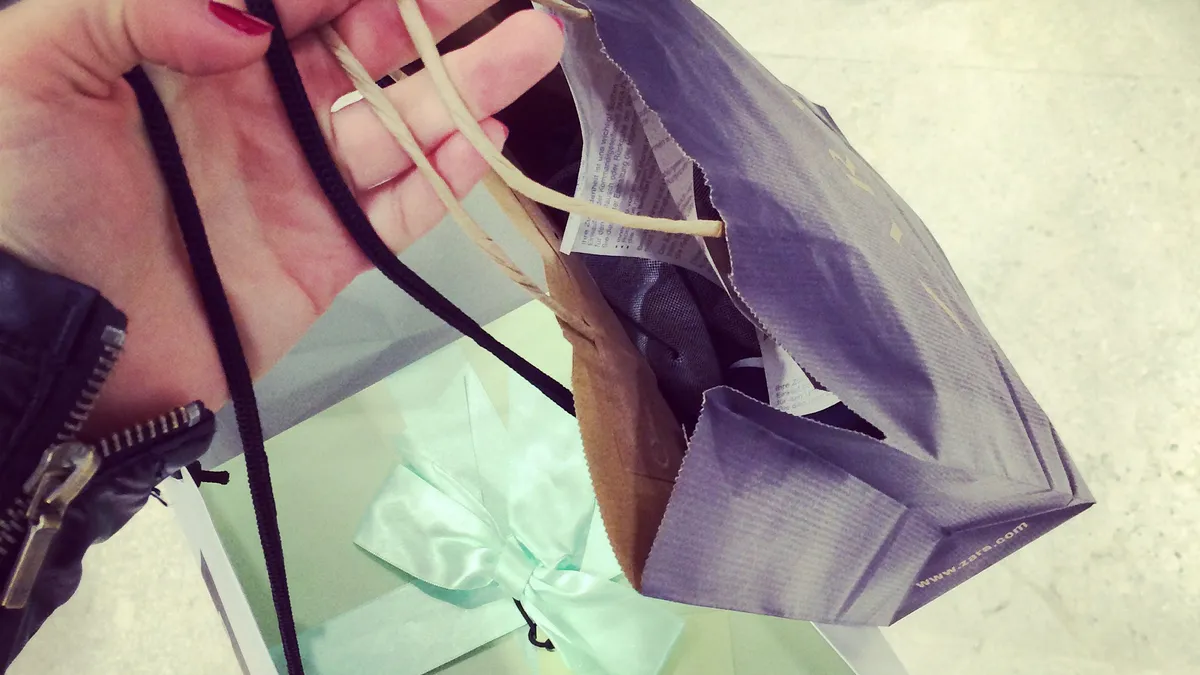Dive Brief:
-
Amid economic recovery, as the pandemic slows in the U.S., retail sales could grow between 10.5% and 13.5% this year and reach between $4.44 trillion and $4.56 trillion, according to a revised forecast this week from the National Retail Federation.
-
Non-store and online sales (included in the total) could grow between 18% and 23% to between $1.09 trillion and $1.13 trillion, the NRF said. Last year, the NRF tallied $4.02 trillion in retail sales, excluding auto sales, fuel sales and restaurants. E-commerce accounted for $920 billion of that last year.
-
The new estimate far exceeds the organization's February projection of at least 6.5% growth, "made when there was still great uncertainty about consumer spending, vaccine distribution, virus infection rates and additional fiscal stimulus, prior to passage of the American Rescue Plan Act," per its press release.
Dive Insight:
In their first quarter earnings reports, several retailers have noted that a confluence of factors — the federal government's financial support to consumers, expanding immunization against COVID-19, the reopening of stores and pent-up demand after a locked-down year — all helped boost their sales.
The speed and heft of the recovery have been something of a surprise, according to a statement from NRF CEO Matthew Shay.
"The economy and consumer spending have proven to be much more resilient than initially forecasted," he said, noting the combined effect of "vaccine distribution, fiscal stimulus and private-sector ingenuity."
NRF economists also believe that U.S. GDP growth for the year could reach 7%, up from the 4.4% to 5% range they estimated earlier. "We are seeing clear signs of a strong and resilient economy," NRF Chief Economist Jack Kleinhenz said in a statement, adding that he expects the fastest growth since 1984.
"[T]he sheer amount of both fiscal and monetary policy intervention has lifted personal income and filled the well of income that was lost back in March and April of last year, creating an overabundance of purchasing power," he also said.
Retailers, in general, were surprisingly resilient even last year. Except for a couple of months when all but essential stores were forced to close, retail sales among the sectors followed by Retail Dive rose throughout 2020, according to the U.S. Commerce Department's monthly tally. Many of the pivots forced on even independent shops, like offering e-commerce and curbside pickup, are likely to continue to serve retailers well (although smaller businesses remain under pressure).
But uncertainty lingers and could grow as the stimulus effect of pandemic-related government programs wanes. Consumer confidence is up compared to 2020, but cracks are showing as people worry about employment, their finances and their health, especially those in lower- to middle-income brackets. Moreover, the pandemic hasn't yet ended, as shown by data collected by the CDC and other organizations; positive cases, hospitalizations and deaths due to COVID-19 continue, with some areas of the U.S. and the world especially vulnerable.















